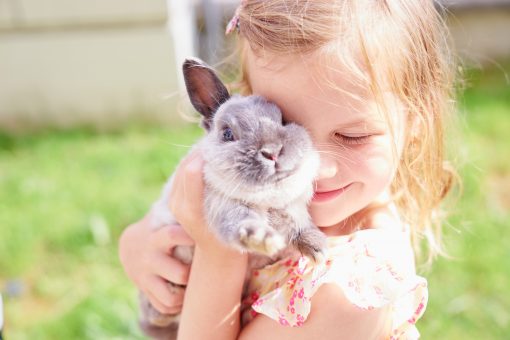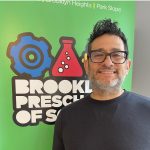
Social-emotional learning starts with smart hiring, and sometimes depends on bunnies
By Carmelo Piazza
When I meet with parents who are considering sending their kids to Brooklyn Preschool of Science, they sometimes ask, “What if my child doesn’t like science?” I explain to them that our goal isn’t to create Einsteins. The goal of our inquiry-based model is to use science as the glue that creates beautiful, holistic connections between subjects, between students, and between students and their teachers. Here are four key ways that we make our mission a reality.
Hire the right teachers
When we hire, we do a very lengthy interview, then we have applicants come in and do a demo lesson. After that, I talk to each applicant about who we are as a school and the importance of SEL and collaborative learning. Every teacher has to be comfortable offering small-group learning, large-group learning, parallel play, and individual play to effectively differentiate instruction and to encompass all the different strengths and weaknesses that our different kids may possess.
Our four teachers have probably the hardest job because their kids are getting ready to go to kindergarten, so the expectations are high. If we have a four-year-old reading on a 1st-grade level, the teacher needs to make sure that there’s a sight word wall to help that kid along. And maybe she’ll sit that kid at a table with three other kids at that same grade level so that center-based learning will be more appropriate for the four who are reading already.
Start every year with community-building
Every year, we dedicate the whole month of September to building community in our classrooms. We may have some kids who just came from another school. We may have some kids who are moving up within our school, and we always have some kids who have never been in school before. What the teachers do that September is look at the three groups of kids and figure out how to get them all aligned with one routine-building process. In September, I don’t bring in specialists. In fact, I tell my teachers that, when it comes to curriculum during September, less is better than more.
Sometimes I have parents who come up to me in September and ask when the specialists are coming. Others don’t understand why we’re not going outside already. They don’t necessarily get what a success it is to have 15 three-year-olds running into school every day—smiling, not crying—sharing with each other, cleaning up their manipulatives.
We need to let the kids learn who their teacher is and give teachers the time they need to establish routines within their classroom. Then we start increasing the subject-matter learning, including monthly visits from all sorts of specialists. In November, for example, we brought in a zoologist, then did a biodiversity day. After each classroom has built a strong learning community, there’s just so much more that happens.
Use inquiry to inspire collaboration
My schools all use an inquiry-based model. Here’s an example of how that benefits a preschool: in March, my wife teaches a unit called Simple Machines. She brings in Lifesavers, straws, hot glue guns, and cardstock. The kids learn about wheels and axles, then they actually get to make something called a “puff mobile.” Kids get so excited to see another kid create a puff mobile that moves 10 feet across that that floor. The fact that theirs only moved three feet doesn’t make them jealous. Instead, it motivates them to want to look at the other kid’s design to see what they did differently. Even at age four, they understand that the differences are what resulted in one puff mobile going further than the other.
It’s different when kids get older. They might be more likely to say, “Stop looking at my toy. This is mine. Don’t steal my idea.” But at the age of four, given the chance, they’ll embrace sharing.
Diffuse conflicts with redirection (and bunnies)
Of course kids don’t always work happily together, but when conflicts do happen or when kids have “a moment,” my teachers respond with one word: redirection. It works 99% of the time. Think about the mindset of a kid with separation anxiety. If Ryan is crying because he’s thinking about Mommy, the minute Ryan stops thinking about Mommy, Ryan will stop crying. Or maybe there’s a situation where one kid wants a toy and another kid has the toy. The first kid is just thinking about that toy and crying for that toy.
Now, what if the teacher redirects this child’s energy in the simplest way? Maybe she could say, “Nobody has helped me feed the bunny yet. Do you want to help me feed the bunny?” Now we’ve redirected the energy and he’s feeding the bunny. We’ve talked about the importance of sharing back in September, and this is how it happens.
Of course redirection may not work for some kids who have behavioral issues, but still, we don’t put kids in timeouts. I’ll talk to the teacher. We’ll look at who the individual child is, and come up with techniques and strategies to give them the experiences they need to become part of a community of joyful learners.

Carmelo Piazza is the executive director/educational director of Brooklyn Preschool of Science. He can be reached at [email protected].
